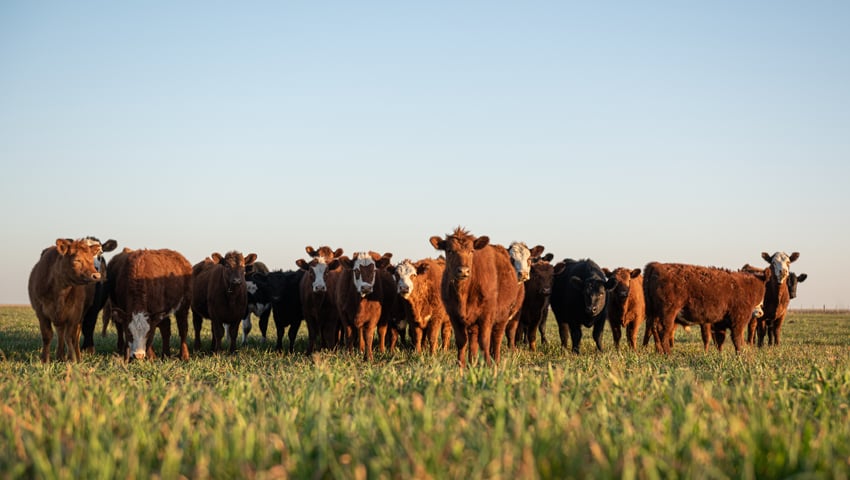When Merryn Somerset Webb recently interviewed Peter Byck on Merryn Talks Money for Bloomberg UK, she started by quoting The Week magazine. She put it to him that, “Eating beef significantly increases your carbon footprint. Cattle is the animal species responsible for most emissions.”
But Byck, whose Roots so Deep series will be available to stream soon, responded, “The idea that meat is bad for the planet, that cattle are ruining the planet – that’s studying a sick system. I agree that industrial cattle production is really bad for planet, but what we’re looking at is cattle production that’s really good for the planet.
“It comes down to how the animals are grazed – replicating the way bison and great herding animals moved across, for example, the Great Plains of the United States. What we call ‘adaptive multi paddock grazing’ is proving to be in an enormous environmental benefit.”
Byck explained that his 10-year Carbon Cowboys research project had produced astonishing results. Explaining the research objective, he said, “What we wanted to know was – is this good for the planet.”
Byck said, “We went to great lengths and raised a lot of money to study the greenhouse gas cycling on these farms. A lot of studies, they’re just looking at methane – but there’s three greenhouse gases on these agricultural systems that are important: carbon dioxide, methane and nitrous oxide. When we account for all three of those greenhouse gases, the [adaptive multi-paddock] method of grazing is drawing down so much carbon that it overtakes the warming of the methane and the nitrous oxide.
“Of course cows emit methane, and nitrous oxide is a natural by-product of their urine on the fields and things like that. But even using the very conservative metric, GWP 100, we’re seeing a drawdown of 12.1 tonnes of CO2 equivalent per hectare per year on the adaptive side of the fence, against a drawdown on the conventional side of 2.9 tonnes of CO2 equivalent per hectare per year. These numbers are not yet published but that’s what we’re looking at right now.” For comparison, 12 tonnes of CO2e per hectare per year is around double the sequestration achieved by a hectare of unmanaged British woodland.
“The idea that grazing cannot be a climate solution does not work with our data. We’ve spent ten years on this. Personally, I’m just looking for solutions to climate change. This is the thing that caught my eye. This is the thing we’ve been looking at for a long time and this is what we found. Animal impact, properly used on land, is what nature developed for planet. It’s incredibly effective – and to act like we should just take all the animals off the land because we don’t like people eating meat is not really looking at what nature has provided the planet.”
Byck said, “The grazing we’re talking about (adaptive multi paddock grazing. or holistic planned grazing. or mob grazing) basically produces on any size farm. The animals are all in one herd and they move around in very tight packs for very short periods of time – so it’s a short duration grazing and then they move on to the next little piece and then what happens is most of the farm gets to rest.
“The farmers that do this type of grazing are focused on soil health first – and one of the ways to get there is to leave the grass and the forbs and weeds and everything else grow up to about waist height during the growing season, then the animals eat half of that, stomp the rest of it down to give the soil a nice cover, then their manure and urine is evenly spread and the land gets to rest. And that’s the replication of the way the bison moved across the Great Plains here in the US and built incredibly deep rich topsoil. The farmers are replicating that movement on their farms – whether it’s 40 acres or 100 hectares it’s totally doable.
“It’s an amazing thing to hear from farmers how well it works – how many more species of plants they’re seeing growing in their fields when they don’t let the animals overgraze – seeds they didn’t even plant, just sitting there in the soil not expressing themselves, and when those plants grow up, they’re attracting so many different insects so you have this great balance of insect community which then brings in whole lot of birds. And here in the United States, our grassland bird population is over 50% depleted since 1970, but on the farms that we’re studying they’re having 300% more of those endangered birds on these farms. So much more wildlife on these farms.”
